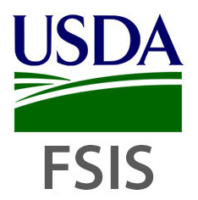Today, the U.S. Department of Agriculture’s (USDA’s) Food Safety and Inspection Service (FSIS) announced that the agency has finalized new federal standards to reduce Salmonella and Campylobacter in ground chicken and turkey products, chicken breasts, legs and wings.
According to FSIS, these new measures will lead to an average of 50,000 fewer foodborne illnesses annually.
FSIS hopes to meet a number of goals with these new standards:
- Reduce Campylobacter illnesses by 32 percent
- Reduce Salmonella illnesses from chicken parts, ground chicken and ground turkey by 30 percent
- Reduce Campylobacter presence in ground turkey by 19 percent
"Over the past seven years, USDA has put in place tighter and more strategic food safety measures than ever before for meat and poultry products. We have made strides in modernizing every aspect of food safety inspection, from company record keeping, to labeling requirements, to the way we perform testing in our labs," says Agriculture Secretary Tom Vilsack. "These new standards, in combination with greater transparency about poultry companies' food safety performance and better testing procedures, will help prevent tens of thousands of foodborne illnesses every year, reaching our Healthy People 2020 goals."
To test the food safety performance of establishments that prepare meat and poultry products, FSIS uses pathogen reduction performance standards. By making the standards for ground poultry tougher to meet, ground poultry products nationwide will have less contamination and therefore result in fewer foodborne illnesses. Even though it’s been 20 years since FSIS implemented performance standards for whole chickens, it has since been proven that levels of Salmonella contamination actually increases when whole chickens are further processed into smaller parts. These smaller parts--mainly wings and breasts--represent 80 percent of the chicken available to American consumers. Another part of these new standards is that FSIS has updated its microbial testing schedule at poultry facilities. This will be coupled with more of each company’s food safety performance details being posted online.
"This approach to poultry inspection is based on science, supported by strong data, and will truly improve public health," says USDA Deputy Under Secretary for Food Safety Al Almanza. "The new performance standards will complement the many other proactive, prevention-based food policies that we've put in place in recent years to make America's supply of meat and poultry safer to eat."
Sign up for Food Safety Magazine’s bi-weekly emails!




